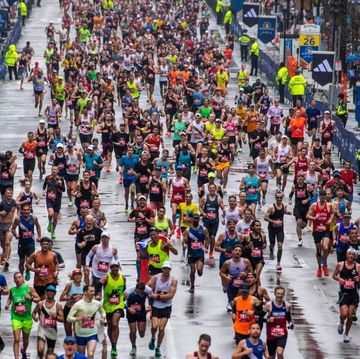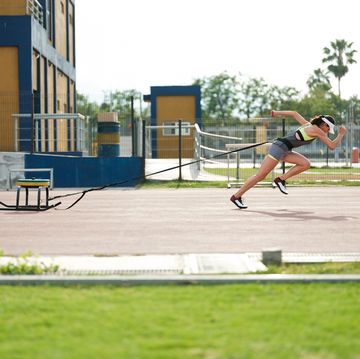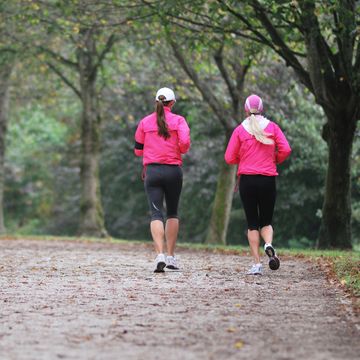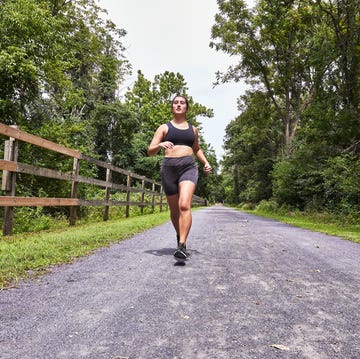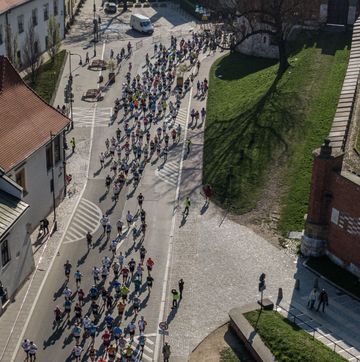Most runners have been there. The race goes well, but the knee starts screaming shortly after the finish. You try stretching, strengthening, and endless foam rolling. Nothing works.
When traditional paths to better health fail, some athletes are finding solutions to vexing injuries by trying neuromuscular therapies. These routines are thought to improve coordination, power, and reaction time by training the body and the mind to work better together—activating muscles that the brain is failing to reach.
“It addresses muscles you have issues utilizing and bridges those gaps in your ability,” says Charles Lantz, a personal trainer and muscle activation technique (MAT) specialist in San Francisco. Specialists are certified through a MAT program developed by Greg Roskopf, a former strength and conditioning coach at Fresno State University and a personal trainer. For example, kinks in a nervous system can lead to glute muscles and hip flexors that don't fire, which can result in that sore knee. It's not the knee that's the problem—it's that the brain isn't telling the glutes and hip flexors to work.
“An injury registers in your movement patterns,” says Eric Cobb, a chiropractor based in Tempe, Arizona. “It often creates compensations elsewhere in the body that can change your normal gait patterns. Those new patterns can become chronic and lead to structural and long-term issues.”
The nervous system continually monitors our external (temperature and noise) and internal (heart rate, balance, blood pressure) environments and hits the brakes if it perceives threat. But the nervous system can misfire and break too soon when compromised by injury, poor posture, or even vision problems.
“Your brain creates pain,” Cobb says. He has developed a system of drills, through his company Z-Health, to help athletes improve their movement patterns. These drills include mobility exercises and stretches, which are specific to an individual's weaknesses and imbalances, to help open neural pathways.
Muscular activation techniques work with the central nervous system. Anecdotal evidence shows that they reactivate muscles and improve joint stability. Those who practice these techniques say that where there is muscle tightness, muscle weakness exists elsewhere in the body.
“Because of trauma, overuse, or stress, the muscles don't contract,” says Laura Miles, co-owner of Norcal Muscle Clinic in San Rafael, California.
After testing, athletes are sometimes given isometric exercises to maintain the restored neural connections. To perform them, the athlete puts resistance on the knee, the ankle, or another pertinent body part while it's positioned at a specific angle. For example, a runner trying to strengthen the ankle would turn the ankle in or out against resistance for five seconds at a time and repeat up to 10 times. For shoulder rotation, an athlete might stand in front of a doorframe with feet hip-width apart and elbow bent, pushing the doorframe sideways with the forearm and holding for 10 seconds.
Kathy Johnson of San Anselmo, California, tried MAT when an Achilles injury threatened to derail her Boston and Big Sur marathon plans. Derek Colderbank, her therapist at Norcal Muscle, thinks Johnson's injury actually stemmed from her shoulder, where he says limited range of motion led to lateral instability in the hip, which caused muscles to pull on the Achilles.
To get to the root of an injury, a practitioner will test strength down the entire kinetic chain, asking the athlete to contract various muscles and hold for a period of time. When a weakness is identified, the trainer prescribes exercises to activate and strengthen the specific areas, which leads to a more evenly distributed workload among all muscles, rather than continuing to strain those that are already strong.
“A healthy person will respond instantly,” Miles says.
While improvement may take anywhere from one to more than six treatments, Johnson felt a difference after a couple of sessions. She ran Boston in a PR time and followed it up with another 12-minute PR of 3:21 at Big Sur, just before her 50th birthday. She visits Colderbank when she feels an injury coming on—or before a race, even if she's feeling healthy. “Now, I might be a bit psychosomatic about it or something,” she jokes. “But, hey, whatever it takes.”
Overcompensation issues can be treated by using neuromuscular therapies, which give an overworked muscle a better chance to heal or resist injury in the first place. “By raising the integrity of the neuromuscular system, a runner is better able to resist the forces and handle the stress of the activity,” Colderbank says. “The athlete will stay stronger through the run and through training.”





